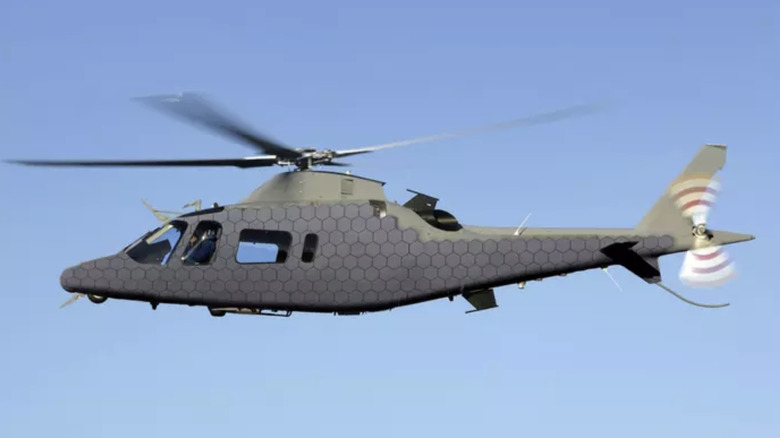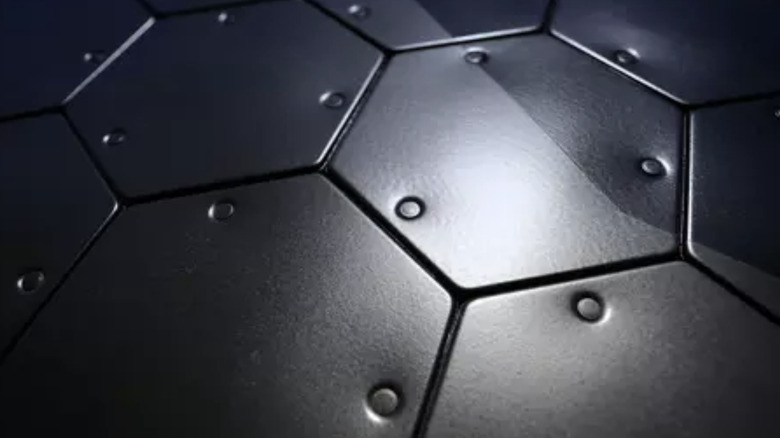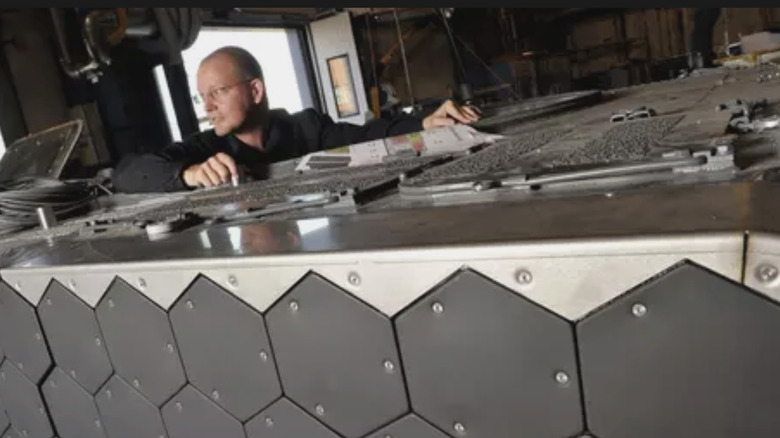This Active Camouflage Technology Could Change The Future Of Warfare
H. G. Wells's "The Invisible Man" brought the idea of invisibility to the mainstream over a century ago. Not long after, the fascination with invisibility became a hot trope in fantasy and sci-fi stories. Scientists have also been at work, trying to materialize their invisibility dreams with tech. Virginia-based defense and aerospace company BAE Systems is yet another player in the invisibility tech race, creating a camouflage system called ADAPTIV.
BAE System's secret sauce to creating invisibility (in infrared, at least) is a cloaking device capable of hiding equipment as large as a military tank and helping them blend with natural surroundings. ADAPTIV seeks to conceal the infrared signature of objects by allowing them to copy the temperature of nearby objects. BAE Systems says its tech can make things such as military vehicles look like a harmless cow, a mound of rocks, or shrubs.
A fruit of three years of research, ADAPTIV isn't a do-it-all invisibility tech that can hide something as heavy as a rocket-raining chopper or a truck from the naked eye. Instead, the tech targets invisibility for infrared sensors, especially for "peacekeeping operations" conducted in urban and remote areas like deserts and forests.
How does ADAPTIV work?
ADAPTIV aims to counter the detection capabilities of infrared sensors in hostile scenarios. Infrared sensors are widely deployed for reliable motion detection, especially in challenging light scenarios. In addition to mapping distances, the most significant advantage of using infrared detectors is their ability to read heat signatures, especially of suspicious objects that may not be a natural part of their immediate environment.
Experts call body heat a soldier's biggest enemy (think Arnold Schwarzenegger in "Predator") because infrared sensors can accurately detect temperature variations; the same goes for machinery. ADAPTIV isn't trying to cancel infrared observations with specialized thermal cloaking tech. Instead, it tries to trick infrared sensors by making them see a different object, like altering the thermal profile of a tank and making it look like a huge harmless rock.
That infrared sorcery is achieved using a layer of hexagonal plates that looks like a honeycomb pattern when plastered over the surface of an object that needs to be hidden from the infrared sensors of the enemy. These modules, as BAE Systems describes, can be heated or cooled quickly to adapt to the temperature of the surroundings. But the surface heating is controlled so that the covered surface area creates the infrared visage of a harmless object.
How does this invisibility pan out?
"The vehicle essentially works like a chameleon, able to mimic its surroundings, or copy other objects such as trucks and cars that can be projected onto the panels from a detailed image bank," BAE Systems notes on its official website. In a nutshell, a tank covered from head to toe in ADAPTIV modules can heat the hexagonal modules to create the pattern of a large bush or a boulder, tricking the person or system surveilling an area using infrared sensors.
The company claims the panels can be configured to accomplish stealth goals across varied range requirements. The company adds that larger camouflage panels can be deployed to create a lower-resolution infrared camouflage in scenarios where movement or close-up stealth is not required – such as buildings or ships.
However, hiding from an enemy's infrared sensors is not the only objective of ADAPTIV. The company says it can also be used for relaying safety messages to friendly watchers. BAE Systems says the panels can "signal peaceful intend [sic] through flashing text messages across its flank or by creating patterns that can easily be recognized by friendly forces."
What else is happening in the field?
ADAPTIV was developed after being commissioned by the Swedish Defence Materiel Administration to hide land vehicles from thermal sensors. BAE Systems is targeting deployment primarily for the CV90 series of armored combat vehicles manufactured by Sweden's Defence Materiel Administration. However, down the road, the invisibility tech can also be potentially deployed on marine and aerial vehicles. The company boldly claims that ADAPTIV can potentially "help to turn a helicopter into a cloud or a warship into a wave."
Meanwhile, experts are also looking at other ways to achieve the invisibility goals. Among the hottest concepts is transformation, which builds on the unique property of curtain camouflage materials that can bend light around an object, making it disappear from plain sight.
In 2021, experts from Xiamen University in China detailed the usage of Molybdenum Trioxide for creating optical devices that can generate an invisibility effect. The team said, "It is the first time that 2D materials have been used for transformation optical devices."
In 2014, a team from the University of Central Florida designed a multilayer 3D metamaterial -– essentially an artificial nanostructure -– that can mimic invisibility in the visible light spectrum. This was the first time such a metamaterial was produced on a large scale using nanotransfer printing. A year later, experts at Germany's Karlsruhe Institute of Technology (KIT) developed an invisibility cloak that can "make small objects disappear from sight without specialized equipment."



